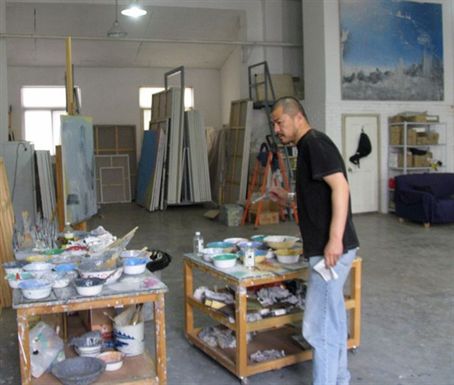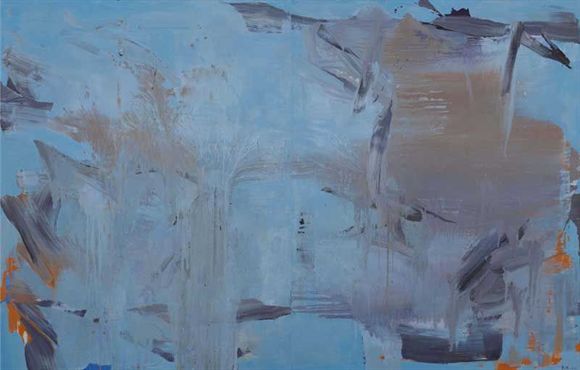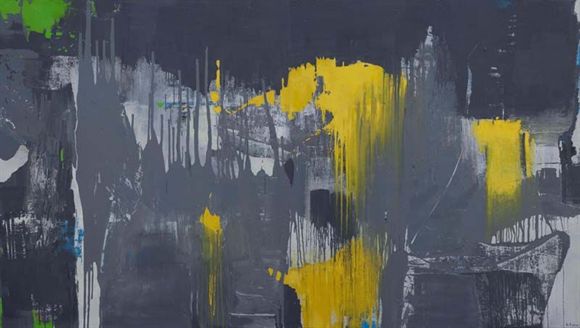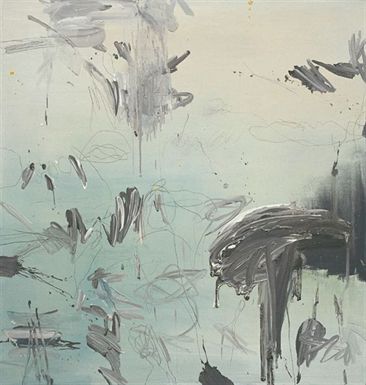IT IS NOT THE ETERNAL TAO: ABSTRACT PAINTAINGS OF FENG LIANGHONG
Jul 09 - Aug 06, 2011
Jul 09 - Aug 06, 2011
Press Release
IT IS NOT THE ETERNAL TAO: ABSTRACT PAINTAINGS OF FENG LIANGHONG
CURATOR: Gu Zhenqing
EXHIBITION DIRECTOR: Sun Yongzeng
EXECUTIVE CURATOR: Dai Zhuoqun
ASSISTANT CURATORS: Hao Danmeng, Qi Shuangyan
PUBLIC RELATIONS: Wu Wei
SPONSOR: WHITE BOX MUSEUM OF ART
OPENING: 16:00, Saturday, 9th July, 2011
DATES: 9th July, 2011 - 6th August, 2011
MUSEUM OPENING HOURS: 10:00 - 18:00, Tuesday - Sunday
VENUE: WHITE BOX MUSEUM OF ART, 798 Art Dist., NO.2 Jiu Xianqiao Road, Chaoyang Dist., Beijing, China
CONTACT US: +86-10-5978 4801 FOR MORE INFORMATION PLEASE VISIT OUR WEBSITE: www.798whitebox.com
Curator Article
IT IS NOT THE ETERNAL TAO: ABSTRACT PAINTINGS OF FENG LIANGHONG
Gu Zhenqing
Abstract has its style and rules, but abstract art hasn’t an exact style and rules. In the history of art, abstract paintings can always free it from the chains of the realities, and their intention to pursue the profound meaning of art has become more and more pure, which makes it obtain its culture sufficiency and independency. As a matter of fact, abstract art is also an act of baptism for many artists to foreclose and free themselves from the functional problems like reflection theories and instrumentalism. As for Feng Lianghong, abstract have always been his spiritual needs, while it can be use to organize the chaos from the reality, and overpass the definite logics. Abstract painting is just the way he observes abstract world, and also a carrier of his experiences through the abstract world. In this particular period of contemporary art, abstract is the value and spiritual path of Feng Lianghong. He uses his abstract paintings to express the abstract meanings, in order to gain the consciousness of time and space through his paintings. Therefore, abstract paintings are the “eternal Tao” for Feng Lianghong.
Under the global perspective, aesthetic value has become a brand new standard value for our world. Therefore, the pureness of abstract paintings also copes with the general values of people under different culture backgrounds, and different orders. Although the situation of Chinese abstract art is different from the one of Europe, moreover it has often been mixed up with the constitutive art, conciliarism, geometric abstraction, and optical art, Feng Lianghong still devoted himself for 20years to paint with the same attitude, that is to use the abstract principle to extract the form from the reality. His early works uses the intermediary of Chinese calligraphy and pressing layers of colors to express the unintentional or intentional changes of emotion through different time and condition. Many organic image and figures pointed out the correspondence between brushstrokes, different blocks of color, and different concepts of the reality. However, recent works of his benefits from the Chinese traditional art conceptions. He focused more on deconstruct and rebuild, controls the time and space of his brush works, with the understanding of the order and rules of art. He emptied all the clear or blurry, narrow or broader concepts of abstract art, letting his own heart and passion do the painting work, and lead his image step into a more pure form. Feng Lianghong strictly introspect himself make him approach more closely to the inner self. Every aspect and relationships of the image was completely not Feng Lianghong’s actual behavior, but a spiritual pursue to the pure visualized concepts. Feng LiangHong endlessly investigates and pursue for the profound meaning of abstract art. While this kind of investigation and pursue to abstract art not only challenge his system of logics, but also peacefully change the common belief that different people see different things, and the common concept that culture differences divide people’s visual experiences.
Installation View
Artworks
- oil on canvas 190x300cm 2011
Media Report














